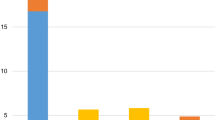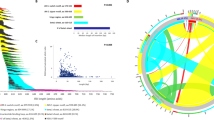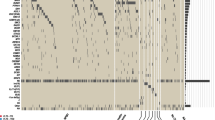Abstract
In acute myeloid leukemia (AML), activating mutations in the fms-like tyrosine kinase 3 (FLT3) gene predict poor prognosis. We determined FLT3 internal tandem duplications (FLT3/ITD) and D835 point mutations in paired initial and relapse samples from 80 pediatric and adult AML patients. One D835 point mutation was found in an initial pediatric AML sample. Fms-like tyrosine kinase 3/ITDs were present in 21 initial and 22 relapse samples (26.3 and 27.5%, respectively). Interestingly, FLT3/ITD positivity was related to a significantly shorter time to relapse, most pronounced when the ITD-positive status was found at relapse (P<0.001). However, FLT3/ITD status changed between diagnosis and relapse in 14 cases. In four patients, the FLT3/ITD became undetectable at relapse in five patients FLT3/ITDs were only detected at relapse, and in five patients the length or number of FLT3/ITDs changed. Gain of FLT3/ITDs may suggest oligoclonality with selective outgrowth of the FLT3/ITD-positive clone, whereas losses may reflect ITDs in the more mature leukemic cells rather than in the leukemic stem cell, or, alternatively, that other genetic aberrations provided a greater selective advantage. Studying FLT3/ITD kinetics in minimal residual disease setting may provide some answers for the changes we observed. Fms-like tyrosine kinase 3/ITD is a relevant marker for prognosis, and remains an important target for therapeutic inhibition.
This is a preview of subscription content, access via your institution
Access options
Subscribe to this journal
Receive 12 print issues and online access
$259.00 per year
only $21.58 per issue
Buy this article
- Purchase on Springer Link
- Instant access to full article PDF
Prices may be subject to local taxes which are calculated during checkout

Similar content being viewed by others
References
Rosnet O, Buhring HJ, Marchetto S, Rappold I, Lavagna C, Sainty D et al. Human FLT3/FLK2 receptor tyrosine kinase is expressed at the surface of normal and malignant hematopoietic cells. Leukemia 1996; 10: 238–248.
Gilliland DG, Griffin JD . The roles of FLT3 in hematopoiesis and leukemia. Blood 2002; 100: 1532–1542.
Hayakawa F, Towatari M, Kiyoi H, Tanimoto M, Kitamura T, Saito H et al. Tandem-duplicated Flt3 constitutively activates STAT5 and MAP kinase and introduces autonomous cell growth in IL-3 dependent cell lines. Oncogene 2000; 19: 624–631.
Yamamoto Y, Kiyoi H, Nakano Y, Suzuki R, Kodera Y, Miyawaki S et al. Activating mutation of D835 within the activation loop of FLT3 in human hematologic malignancies. Blood 2001; 97: 2434–2439.
Kottaridis PD, Gale RE, Linch DC . Prognostic implications of the presence of FLT3 mutations in patients with acute myeloid leukemia. Leukemia Lymphoma 2003; 44: 905–913.
Zwaan ChM, Meshinchi S, Radich JP, Veerman AJ, Huismans DR, Munske L et al. FLT3 internal tandem duplication in 234 children with acute myeloid leukemia (AML): prognostic significance and relation to cellular drug resistance. Blood 2003; 102: 2387–2394.
Grundler R, Miething C, Thiede C, Peschel C, Duyster J . FLT3-ITD and tyrosine kinase domain mutants induce 2 distinct phenotypes in a murine bone marrow transplantation model. Blood 2005; 105: 4792–4799.
Kiyoi H, Naoe T, Nakano Y, Yokota S, Minami S, Miyawaki S et al. Prognostic implication of FLT3 and N-RAS gene mutations in acute myeloid leukemia. Blood 1999; 93: 3074–3080.
Shih LY, Huang CF, Wu JH, Lin TL, Dunn P, Wang PN et al. Internal tandem duplication of FLT3 in relapsed acute myeloid leukemia: a comparative analysis of bone marrow samples from 108 adult patients at diagnosis and relapse. Blood 2002; 100: 2387–2392.
Kottaridis PD, Gale RE, Langabeer SE, Frew ME, Bowen DT, Linch DC . Studies of FLT3 mutations in paired presentation and relapse samples from patients with acute myeloid leukemia: implications for the role of FLT3 mutations in leukemogenesis, minimal residual disease detection, and possible therapy with FLT3 inhibitors. Blood 2002; 100: 2393–2398.
Levis M, Murphy KM, Pham R, Kim KT, Stine A, Li L et al. Internal tandem duplications of the FLT3 gene are present in leukemia stem cells. Blood 2005; 106: 673–680.
Libura M, Asnafi V, Tu A, Delabesse E, Tigaud I, Cymbalista F et al. FLT3 and MLL intragenic abnormalities in AML reflect a common category of genotoxic stress. Blood 2003; 102: 2198–2204.
Goemans BF, Zwaan ChM, Miller M, Zimmermann M, Harlow A, Meshinchi S et al. Mutations in KIT and RAS are frequent events in pediatric core binding factor acute myeloid leukemia. Leukemia 2005; 19: 1536–1542.
Chou WC, Tang JL, Lin LI, Yao M, Tsay W, Chen CY et al. Nucleophosmin mutations in de novo acute myeloid leukemia: the age-dependent incidences and the stability during disease evolution. Cancer Res 2006; 66: 3310–3316.
Tiesmeier J, Muller-Tidow C, Westermann A, Czwalinna A, Hoffmann M, Krauter J et al. Evolution of FLT3-ITD and D835 activating point mutations in relapsing acute myeloid leukemia and response to salvage therapy. Leukemia Res 2004; 28: 1069–1074.
Scholl S, Loncarevic IF, Krause C, Kunert C, Clement JH, Hoffken K . Minimal residual disease based on patient specific Flt3-ITD and -ITT mutations in acute myeloid leukemia. Leukemia Res 2005; 29: 849–853.
Author information
Authors and Affiliations
Corresponding author
Rights and permissions
About this article
Cite this article
Cloos, J., Goemans, B., Hess, C. et al. Stability and prognostic influence of FLT3 mutations in paired initial and relapsed AML samples. Leukemia 20, 1217–1220 (2006). https://doi.org/10.1038/sj.leu.2404246
Received:
Revised:
Accepted:
Published:
Issue Date:
DOI: https://doi.org/10.1038/sj.leu.2404246
Keywords
This article is cited by
-
Update on Small Molecule Targeted Therapies for Acute Myeloid Leukemia
Current Treatment Options in Oncology (2023)
-
Resistance to targeted therapies in acute myeloid leukemia
Clinical & Experimental Metastasis (2023)
-
Wilm’s Tumor 1-guided preemptive treatment with hypomethylating agents for molecular relapse of AML and MDS after allogeneic transplantation
Bone Marrow Transplantation (2021)
-
Tetraspanin CD82 drives acute myeloid leukemia chemoresistance by modulating protein kinase C alpha and β1 integrin activation
Oncogene (2020)
-
Practical Considerations for Treatment of Relapsed/Refractory FLT3-ITD Acute Myeloid Leukaemia with Quizartinib: Illustrative Case Reports
Clinical Drug Investigation (2020)



